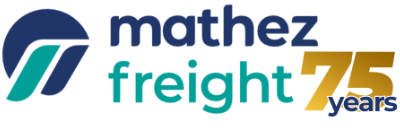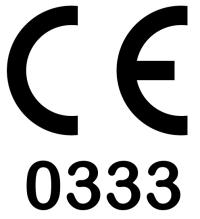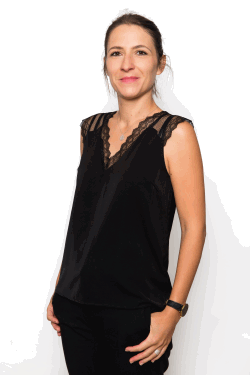Shields, visors, masks, gowns, gloves, hand sanitiser etc. The health crisis has created new requirements for protecting company employees. How can you recognise different types of PPE and Medical Device? What are the requirements for each type of protection from a customs viewpoint? Our experts have the answers to the main issues faced by importers.
Covid-19 health supplies
The health crisis has upset our working lives and bought in new regulations for French companies:
- The Covid-19 crisis has created new requirements for protecting staff at work. As employers are responsible for the health and safety of their staff, the health crisis has led to a reassessment of risks and in many cases the mobilisation of new supplies: shields, visors, masks, gowns, gloves and hand sanitiser.
Companies or intermediaries wanting to import these supplies must have a thorough understanding of the customs side of things. There are specific checks that customs imposes on devices in line with the Regulations on PPE (Personal Protective Equipment) or MDs (Medical Devices), and these sometimes change and time goes on. - French institutions undertook exceptional measures to deal with the health crisis and also the lack of supplies, These measures affected the import/export conditions for health supplies between March/April and the month of May, and even September/October 2020. Some of these measures were detailed in our article about importing masks to France. (in French) With the exception of measures relating to VAT, these measures are no longer in effect for the most part. This is particularly true when it comes to the accepting of equivalents.
All masks and other supplies imported to France must now conform with CE standards.
PPE or MDs: what are the customs requirements ?
Whats are the customs’ requirements for CE standard Personal Protective Equipment (PPE) or Medical Devices (MDs). ?
The regulations are as follows, pending assessment by the customs’ authorities:
- The manufacturer or their representative within the European Union must provide an EU DOC (“EU Declaration of Conformity”).
> Example EU Declaration of Conformity (doc & pdf)
> Example declaration of conformity for surgical masks and for FFP2 masks (document to personalise) - The manufacturer must attach the CE Mark (followed by the 4 numbers identifying the certified body where applicable, see below) along with the reference standard corresponding to the type of product.
Ex: NF EN 14683: 2019 for surgical masks, NF 149 +A1 for FFP2 masks and so on. - They must also insert a user -manual and instructions in French.
> See Notice from DGCCRF on 3rd May 2022, instructions on page 2 and an example on page 3. - They must supply a test report or a technical file on the reference standard.
In this way, the manufacturer gets a laboratory evaluation either independently or via a sub-contractor, to ensure their product conforms with the demands of the Directive for MD, Directive 94/42/CEE, and for PPE, Directive 2016/425.
> Ex. of test report for surgical masks. - For medical devices class IIA, IIB & II, and for PPE categories II and III, the manufacturer must also involve a certified body to evaluate the conformity of the products and obtain an “EU examination certificate type” or “Certificat d’examen UE de type” and display the certified laboratory number on the product.
Be sure to check that the laboratory that is named on the certificate figures on the official list of certified European bodies for medical supplies or the Official list of certified European bodies for PPE, according to the required standard.
How can you find out which products are considered “Medical Devices” (MDs) Or “Personal Protective Equipment” (PPE) and their class?
To answer the first question you have to work out, “How the product will be used and where?”
- . Medical Devices (MDs) are instruments, devices and products destined to be used by people for medical reasons with a main action that is not derived from pharmaceuticals (public health code article L.5211-1). They come under Directive 94/42/CEE, and there are many of them: between 90,000 et 1.5 million different products! From the simple thermometer to more complex devices like defibrillators passing by surgical staples, dental prosthesis, breathing apparatus, surgical drapes and more. These devices are classified into 4 categories, in line with the potential health risks involved:
- Class I – the lowest risk: masks, examination gloves, over-shoes, crutches, compresses (this class is only for non-sterile products which have no measuring function)
- Class IIa – moderate/measured risk: thermometers, contact lenses etc.
- Class IIb – substantial/high risk : staples, condoms, sterile masks,
- Class III – the greatest level of risk : implants, stents, hip replacement prosthesis etc.
Please note: don’t confuse the medical class of a device with the classification system of bacterial filtration efficiency for surgical masks as stipulated by standard EN14683 : 2019.
Type I filters a minimum of 95% of bacteria / Type II filters more than 98% of bacteria/ Type II « R » filters more than 98% of bacteria and is resistant to projections.
- . Personal Protective Equipment (PPE) is a device or item that is designed to be carried or worn by an individual to protect them, against one or several risks to their health or safety, whether that is in their professional or personal life. PPE comes under Directive 2016/425 and is categorised in line with the level of risk incurred:
- Category I – low risk: sunglasses, gardening gloves, rainwear, washing up gloves.
- Category II – high risk : protective glasses, shoes, boots, visors, gloves and helmets.
- Category III – lethal risk: safety harnesses, devices that protect against heat, electricity and chemical attacks, respiratory protection and lifejackets.
When working out product usage, you must bear in mind the product’s main use in line with the packaging, labelling, user guide and/or promotional materials that go with it. Some products may be classed under both categories (see below)
What to do if a product has dual-usage ?
Some items used within this health crisis may come under both categories MDs and PPE. This can happen, for example with masks, gloves and gowns, which are generally used in a medical environment but are now used for personal protection in both working life and personal life. There are also many items of PPE that are used within the health sector (hospitals, laboratories, medical centres etc.) So there may be some confusion with these products as they can perform two functions.
- Example: surgical gloves. In general, examination gloves and surgical gloves are medical supplies, but the manufacturer could also decide they were designed to protect their user.
If a product has this dual use, it should conform with the demands of both directives. So the packaging should display a message that states the product conforms with both directives and all labelling should comply with both directives.
A few « tricky » products and the standards linked to them:
Example : disposable over-shoes, clothing and gowns used within a hospital setting.
Once again, ask yourself, “What is the intended use for this product?”
- If the manufacturer created the product specifically for personnel working in an operating theatre, to prevent patient contamination, then it is considered an MD.
- However, if the product is aimed at hospital visitors, to prevent spreading dirt and contamination it would not be considered as a medical device.
Some supplies and their usual classification
The ANSM (French National Agency for the Safety of Medicines and Health) publishes a list of classifications, regulations and restrictions of MDs :
| Merchandise | European Directive | European Standard |
| Surgical masks | MS Directive | EN 14683 :2019 |
| FFP 1, 2, 3 Protective masks | PPE Directive | EN 149 +A1 |
| Surgical gloves | MD directive | EN 455 |
| Protective gloves | PPE directive | EN 374 – Protection from chemical risks and micro-organisms |
| Protective eyewear and visors | PPE directive | EN 166 |
| Medical clothing | MD directive | EN 13795 |
| Protective clothing | PPE directive | EN 14126 – protective clothing against infective agents |
| EN 14605 – protective clothing against liquid chemicals | ||
| Pressurised air or valve respiratory mask | PPE directive | EN 402 – respiratory protective devices |
| Thermometers | MD Directive | EN 12470 |
Labelling questions: surgical masks example
Stay vigilant when it comes to labelling! This is an integral part of your duty and makes up part of the occasionally strict checks carried out by customs.
Surgical masks seem to be the most common imported category of mask nowadays. For this reason, on the 17th June 2020, the DGCCFR published a notice for professionals, which was aimed at reminding importers of their labelling obligations if they want to sell their product on the French market.
Medical device: do you speak French ?
It’s mandatory for any labels on a medical device that’s to be handed over to the end-user or patient to have a French-language version along with the user-manual that goes with it, and any other information required for its use, (R.5211-20 of the Public Health Code).
Medical devices: electronic user manuals ?
Some would like to replace the printed user manual with a digital download. European powers are working towards this, but for now, it’s still mandatory to include a paper user-manual.
CE Labels and certified laboratory
For all MD and PPE products that require laboratory certification to achieve the CE standard, the CE label should be stamped onto the product followed by the 4 identifying number of the certification body, or if this is not possible, onto the product packaging/labels, along with the user-manual and the sales packaging.




